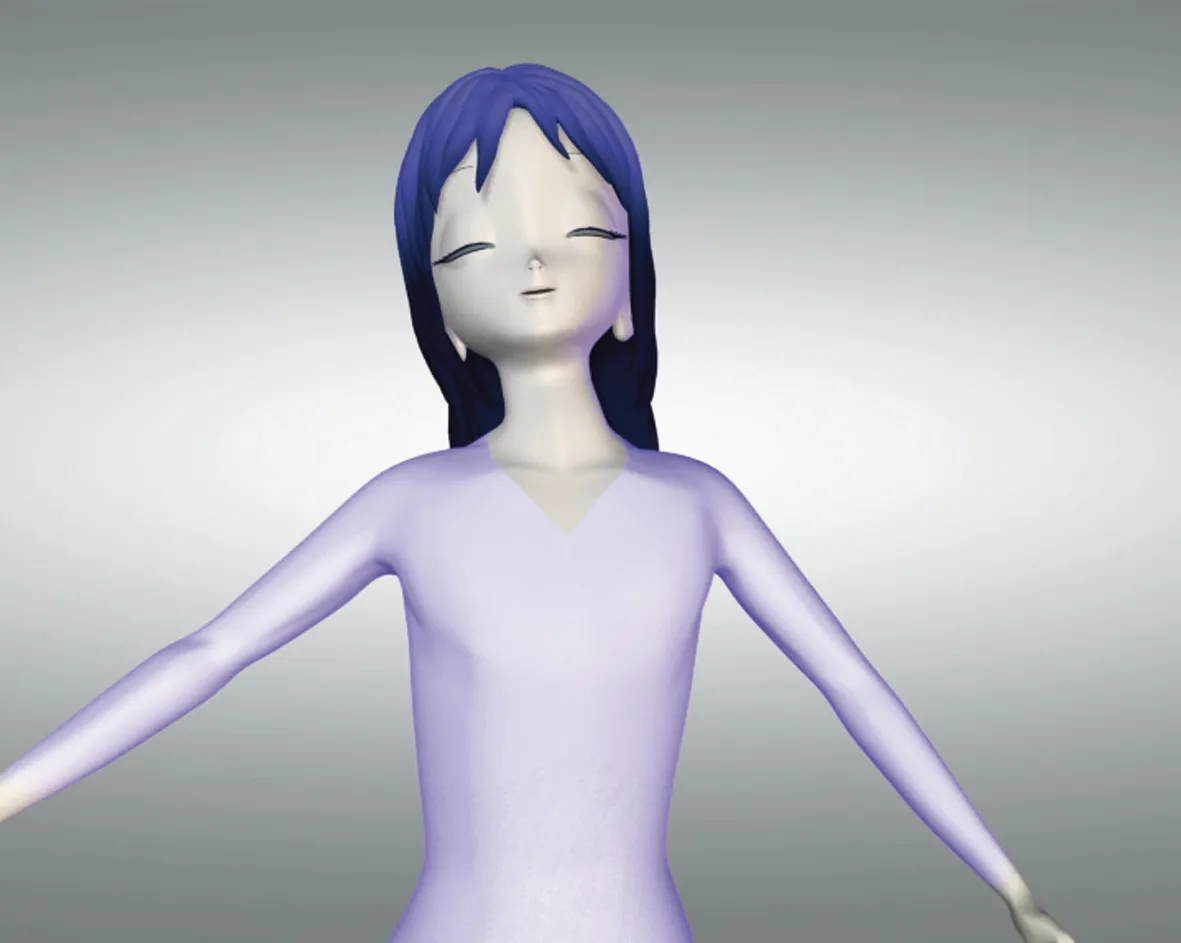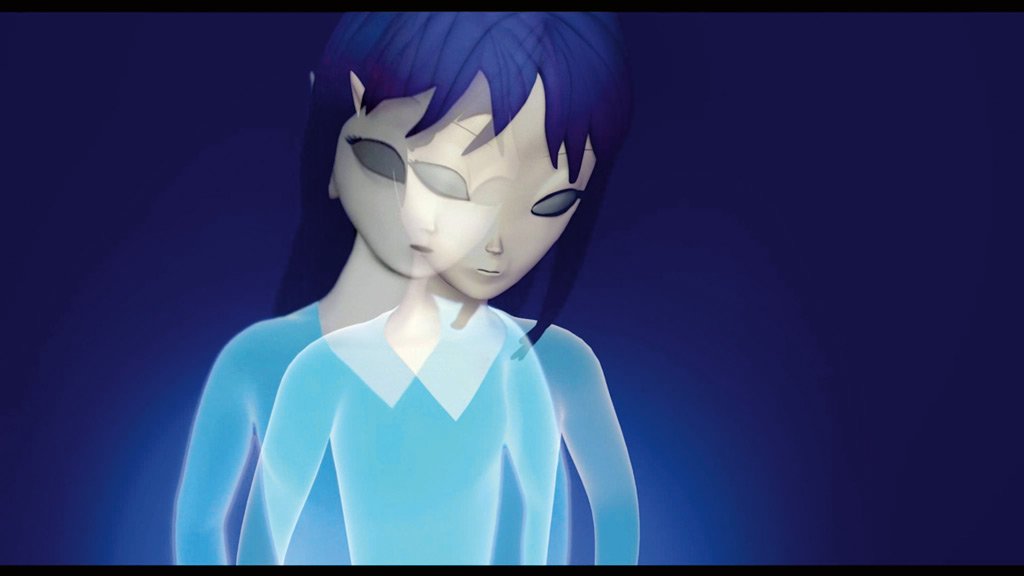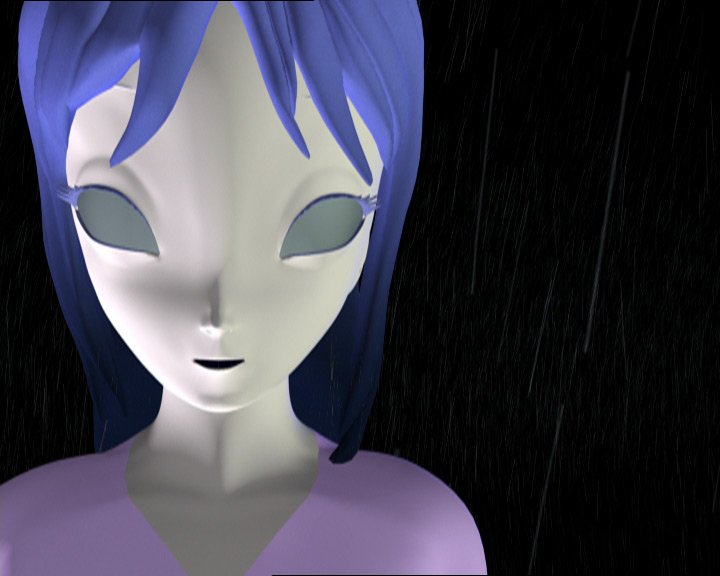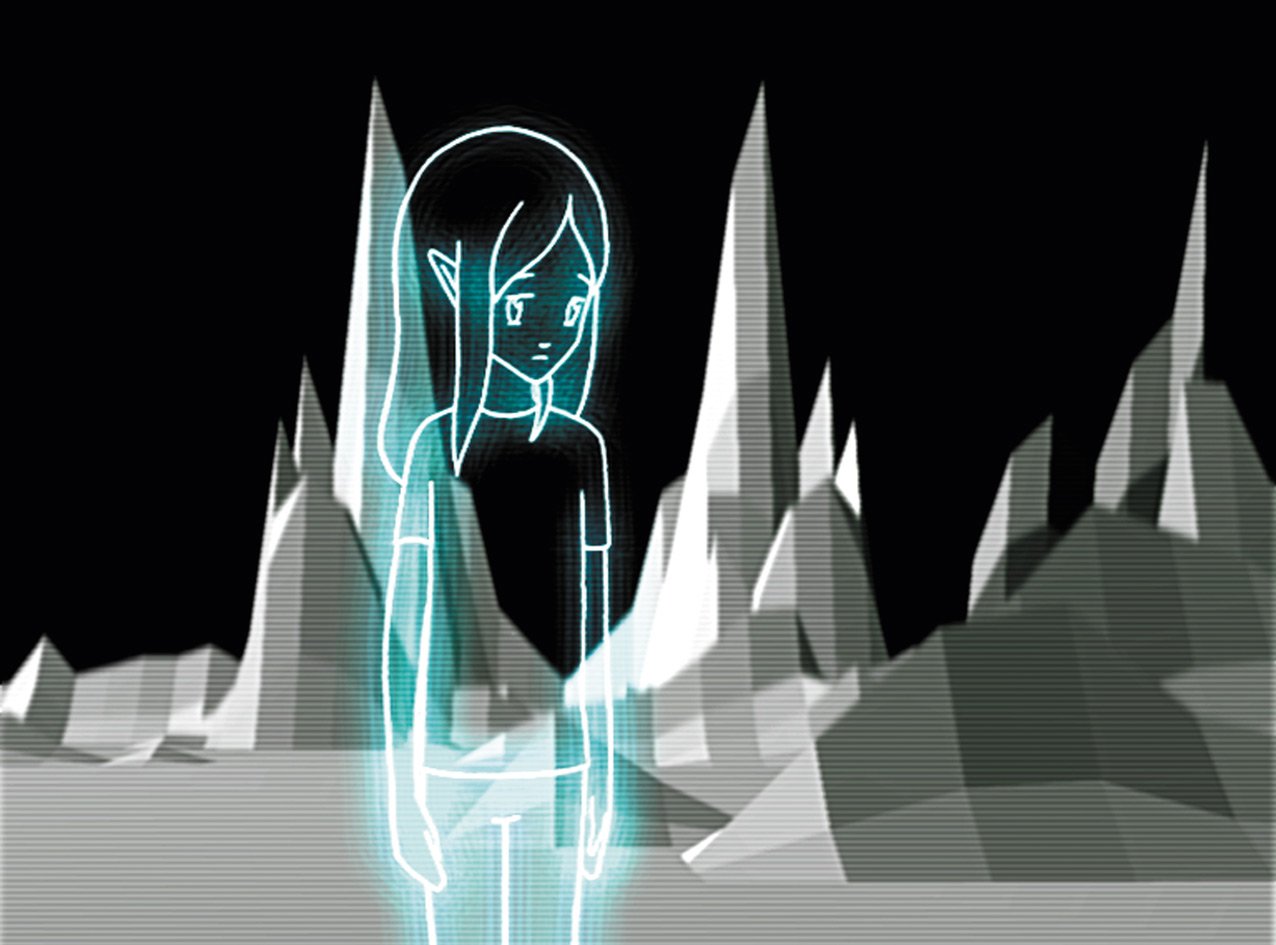
Around Annlee
Annlee is a special case in the history of art. This young girl, an anime character, is a teenager with big, vacant eyes and purple hair.
Annlee is a special case in the history of art. This young girl, an anime character, is a teenager with big, vacant eyes and purple hair. Philippe Parreno and Pierre Huyghe bought her in 1999 from a catalogue of a Japanese company specializing in this field. She has no biography, no superpowers, no attributes, no distinctive features. She is an “entry-level” character in the Japanese animation industry.
As part of the No Ghost Just a Shell project (1999–2002), she was embodied by eighteen artists in some thirty works. Long after her “death”, she was reincarnated, thanks to Tino Sehgal, in the bodies of young actresses who intervened in exhibition spaces. But is Annlee really an “artwork”? What do you call a fictional character, who has spent several films exercising her reflexive consciousness, discussing her own origin and perspectives, owning the rights of individuals, and finally coming to walk alongside us and ask us questions?
Philippe Parreno, Anywhere out of the World, 2000

Anywhere Out of The World (2000) gives voice to Annlee. While telling her story, throughout the video she questions her fictional condition and the artificial nature of her existence. The work has gone through several iterations—it consists of a single sequence shot, framed around the figure of Annlee. This variant of the work doubles up its image, super-imposing the visuals of the first two versions. This strategy of portrayal makes the seriality of the work manifest and exposes it as a construction. The monologue recited by Annlee goes even further in this sense, revealing certain production details, such as the first name of the person who dubs her voice. By displaying herself as the result of a process of construction, Annlee asserts a position of externality to the world. Her image is only a distant reflection of it. Her speech ends with these words, taken from a poem by Baudelaire: “Anywhere! Anywhere! Out of the world!”
Tino Sehgal, Ann Lee, 2011
Ann Lee is a “constructed situation” by German-Indian artist Tino Sehgal, who takes on the character. Tino Sehgal heightens the blurring of reality and fiction by having young performers embody Ann Lee, entering the exhibition space to better reflect on her own situation throughout a monologue and engage in dialogue with visitors. A work of art then seems literally endowed with speech and capable of interacting with the real world.
Dominique Gonzalez-Foerster, Ann Lee in Anzen Zone, 2000

Dominique Gonzalez-Foerster's work confronts Annlee with their state of mirror-being, which makes them a surface, without an identity of their own, destined to receive what is projected at them. Wandering through a dark non-place in a fine rain, they murmur in Japanese, their native language, a monologue with prophetic accents, through which they seem to become aware of their absence of agency. Their image is duplicated by the arrival of their clone, who continues the speech in English: “There will be no safety zone… They will separate you from your feelings… It’s a trip to nowhere.” One won-ders whether this warning is addressed to their fellow human beings, the fictional characters, or to the audience of the exhibition. From this ambiguity the question emerges: who is closer to reality, us or Annlee? Are we not also fictions, in which multiple political, historical, and social narratives intersect? The neutral pronoun they is used in the text to represent the neutral gender. Pierre Huyghe says of Annlee’s character, a shell with interchangeable content: "It’s not ‘she’, but ‘it’.”
Pierre Huyghe, One Million Kingdoms, 2001

One Million Kingdoms is part of the No Ghost Just a Shell project. The video begins with a warning from Annlee: “This is a lie.” This is followed by an exis-tential monologue situated in the imaginary of space exploration and punctuated by quotations from Jules Verne’s Journey to the Centre of the Earth (1864). These multiple narratives merge into one another, like the virtual landscape that Annlee traverses and that transforms to the rhythm of her voice. The latter is a fiction in itself, conceived from audio recordings of Neil Armstrong’s voice, which she imitates. Everything here is about inter-changeable signs, which take the form of speeches echoing on their surfaces. One speech becomes another, then changes into a landscape, thus showing the permeability of the forms and stories that make up the fictional fabric of our relationship to the world.
The Pinault Collection first presented this work in the exhibition Un Certain État du Monde? (2008) at the Garage
Center for Contemporary Culture in Moscow, and then in Une seconde d'éternité (2022) at the Bourse de Commerce in Paris.